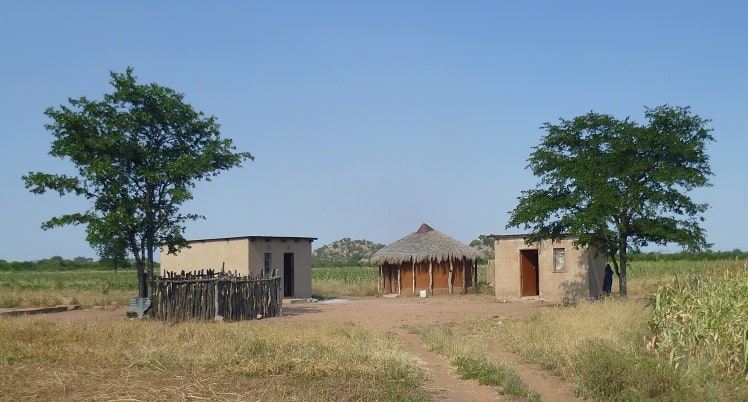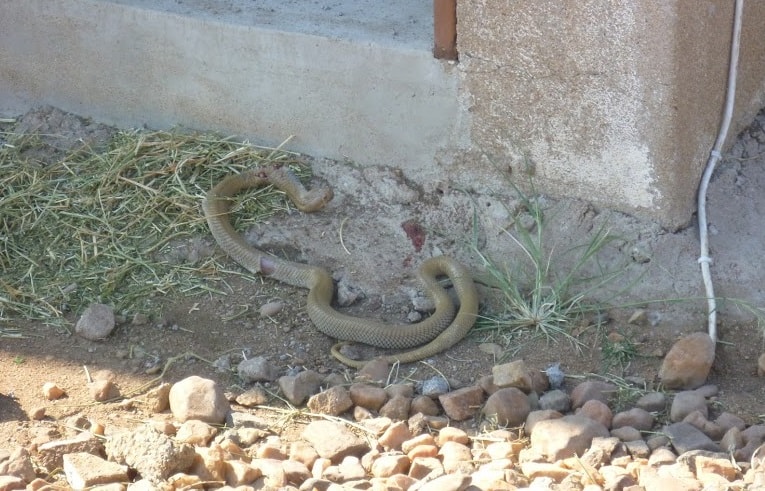Agricultural Modeling and Training Systems has always striven to provide more than just software. We have a strong commitment to ensuring that our users have the tools that they need to help them succeed in feeding cattle in the best possible manner. To this effort we offer the program and comprehensive support materials to universities involved in teaching ruminant nutrition. In return, we like to be educated as well; we ask our Academic Initiative participants to send us an article we might feature on our blog. Will Gratwick, working with Dr. Martin Van der Leek at the University of Pretoria in South Africa, is one of our Academic Users. He sent the following post:

My background
I qualified as a veterinarian from Liverpool, UK, in 2009. I am currently completing a specialist degree in Cattle Herd Health at the University of Pretoria, South Africa.

A colleague and I traveled to the town of Selibe Phikwe in Botswana to visit a small scale dairy farmer with ambitious plans. Botswana is similar in size to France but has a population of just over 2 million people, with 70% of its land being within the Kalahari desert. Most of the population is concentrated in the south east where the climate is still relatively arid and recent years have seen significant problems with droughts and desertification. Botswana used to be one of the poorest countries in the world but is now one of the most rapidly developing, with the main industries being mining and tourism. The dairy industry is extremely small and consists mainly of subsistence farmers. Most of the processed milk and dairy products are imported from South Africa, and the government has identified the potential for modernization of the dairy industry.

The milking parlour

The staff accomodation
The farm which we visited had been producing milk on a small scale for many years from a herd of around a dozen Brown Swiss cows, the first of which had been purchased to provide milk for the family. The milk was sold locally, direct to the consumer. The plan was to build up a herd of around 100 Jersey cattle by purchasing cows from farms in South Africa, and to renovate an abandoned milk processing plant and shop in the town. The first 10 cows were already on the farm and were being milked using a portable milking machine. The biggest challenge facing the enterprise was the cost of feeding the cows. Despite being able to sell the milk for 8 Pula/litre (around $40/cwt), the feed costs alone were still higher than this! The cows were being fed entirely with bought in feeds which consisted of baled alfalfa hay, chopped lablab (a tropical leguminous forage similar to alfalfa but of lower nutritional value) and an 18% dairy meal. When we weighed the bags of lablab we realized that it was actually costing more than the dairy meal on a dry matter basis! Attempts to grow forages on the farm had thus far been unsuccessful due to a lack of expertise in this area.

Dolichos Lablab
During our visit we assessed a number of potential sources of feed in attempt to help the farmer find a way to reduce his feed costs. Ultimately it will be necessary for him to develop the arable side of the enterprise. There is potential to do this successfully as, despite low and erratic rainfall in the area, the farm is close to the Zambezi river and is fortunate enough to have a good source of underground water. In the meantime, we were able to use AMTS software to formulate a ration with some potential for a profit margin by removing the expensive lablab from the diet and by including some bakery waste to reduce the amount of dairy meal required. The relatively low milk production of the cows meant that there was plenty of capacity to include such a volatile carbohydrate source without compromising rumen function, and there was plenty available from the bakery in the town at 10% of the cost of the dairy meal.
Our visit to Botswana was an interesting and rewarding experience. The people were welcoming and friendly and had a real sense of optimism for their country.

An unwelcome visitor to the milking parlour
Thank you Will! Sometimes we get caught up in thinking ration formulation software is meant only for large, “progressive” operations. When we are given an example like Will outlined above—we can see how it can be important on a different scale.
